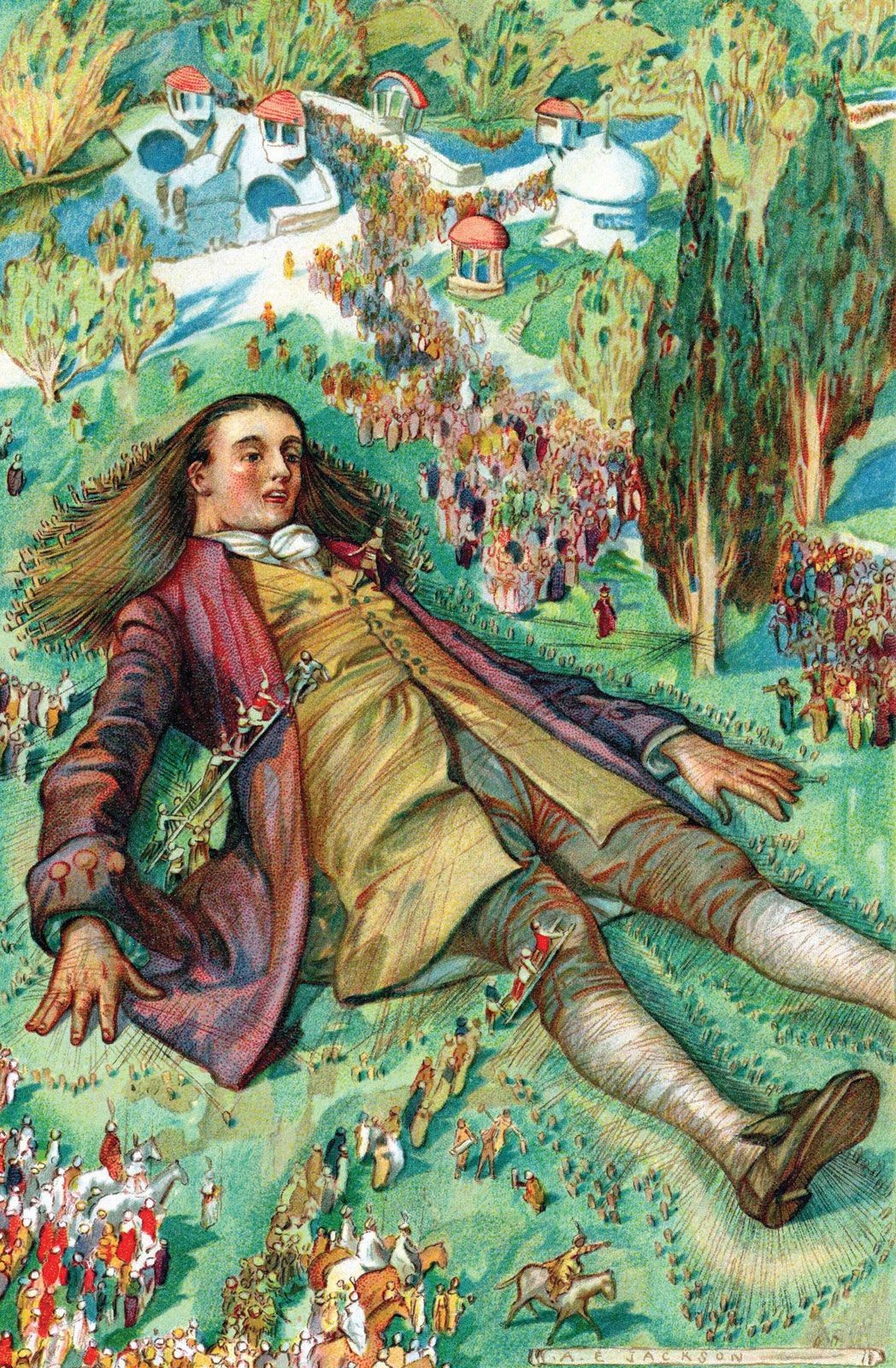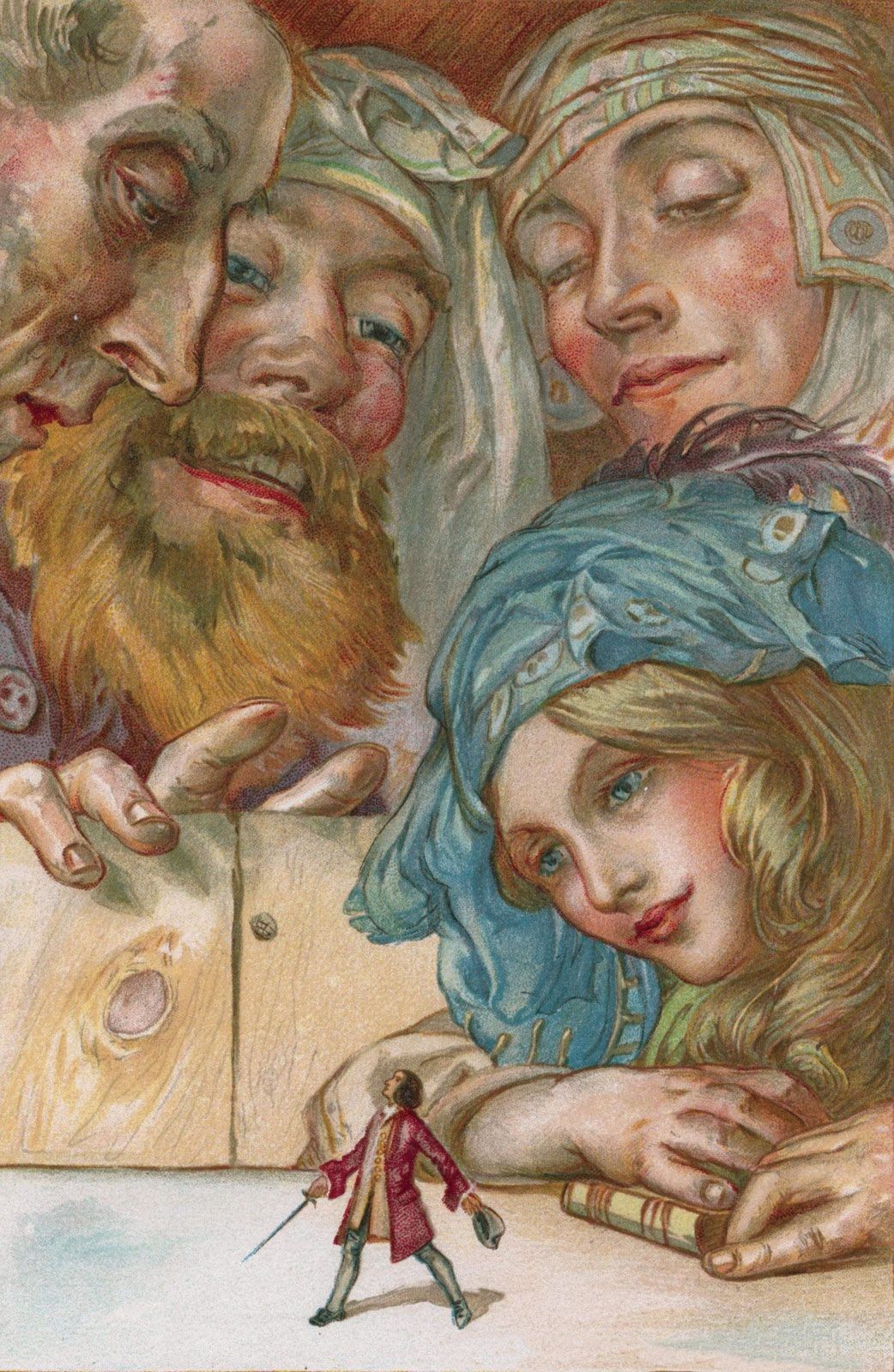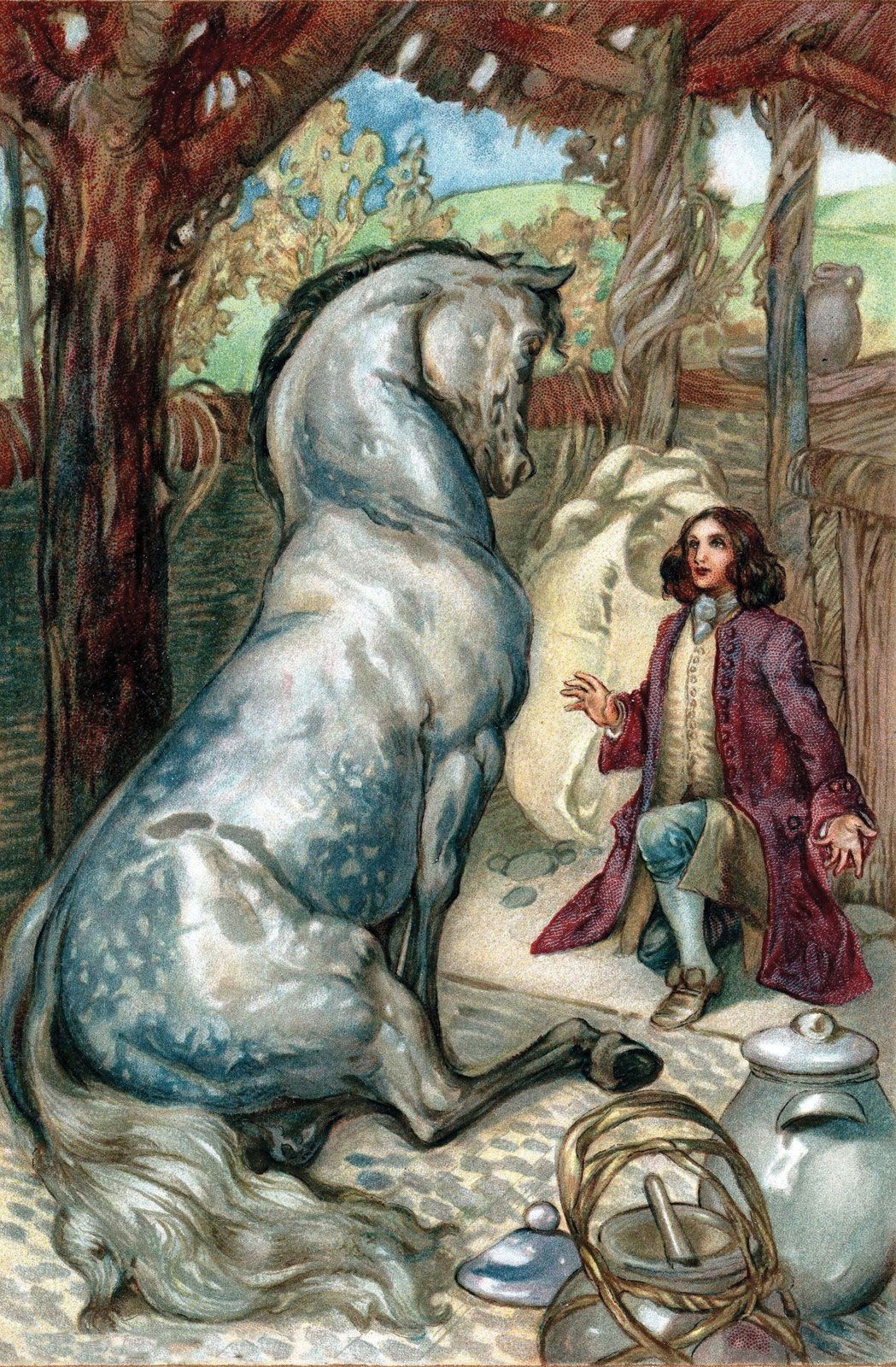Gulliver’s Travels, formally titled Travels into Several Remote Nations of the World, is a satirical novel by Jonathan Swift, published in 1726. Presented as a travelogue, the book recounts the voyages of Lemuel Gulliver to fantastical lands, serving as a sharp critique of human nature and 18th-century English society. This article provides a summary of Gulliver’s Travels, exploring its key themes, characters, and satirical elements.
A Voyage Through Four Lands: A Summary
The novel is divided into four parts, each detailing a different voyage:
Part 1: Lilliput – The Land of the Little People
Gulliver’s shipwrecks and he finds himself washed ashore on Lilliput, an island inhabited by tiny people, only six inches tall. He becomes a giant among them, initially a prisoner but eventually an ally. Swift uses the Lilliputians’ miniature size to satirize the pettiness and absurdity of political disputes and courtly intrigues. The conflict between the Big-Endians and Little-Endians, who argue over which end of an egg to break, is a direct parody of religious controversies. Gulliver’s actions, such as extinguishing a fire by urinating on it, further highlight the absurdity of the Lilliputian world. He eventually flees to Blefuscu to escape being blinded.
 Lemuel Gulliver tied down by the tiny Lilliputians.
Lemuel Gulliver tied down by the tiny Lilliputians.
Part 2: Brobdingnag – The Land of the Giants
In his second voyage, Gulliver lands in Brobdingnag, a land of giants. Here, the roles are reversed, and Gulliver becomes a tiny curiosity. He is kept as a pet by a young girl named Glumdalclitch and later becomes a court favorite. In Brobdingnag, Swift satirizes the physical and moral corruption of humanity. The King of Brobdingnag is appalled by Gulliver’s descriptions of European society, government, and warfare, concluding that humans are nothing more than “odious vermin.” Gulliver’s offer to share the secret of gunpowder is met with disgust, highlighting the king’s wisdom and moral superiority. Eventually, Gulliver is carried away by an eagle and returned to the sea.
 Gulliver looking up at a Brobdingnagian farmer in a field.
Gulliver looking up at a Brobdingnagian farmer in a field.
Part 3: Laputa, Balnibarbi, Luggnagg, and Japan – Lands of Science and Immortality
This voyage takes Gulliver to several different lands. First, he visits Laputa, a flying island inhabited by intellectuals obsessed with mathematics and music but lacking in practical skills. Then, he travels to Balnibarbi, where he witnesses the disastrous consequences of impractical scientific experiments conducted by the Academy of Lagado. He also visits Glubbdubdrib, an island where he can summon the spirits of historical figures and learns about the inaccuracies and biases in historical accounts. Finally, in Luggnagg, he encounters the Struldbrugs, immortals who suffer the miseries of perpetual old age, satirizing the human desire for eternal life without considering its consequences. Gulliver eventually makes his way to Japan and back to England.
Part 4: The Land of the Houyhnhnms – A World of Rational Horses
Gulliver’s final voyage brings him to the land of the Houyhnhnms, a race of intelligent, rational horses who rule over the Yahoos, brutish human-like creatures. The Houyhnhnms represent reason and virtue, while the Yahoos embody the worst aspects of human nature. Gulliver admires the Houyhnhnms and attempts to emulate their way of life. However, he is eventually exiled from their society because he is still too much like a Yahoo. Upon returning to England, Gulliver is so disgusted with humanity that he can barely tolerate the presence of his own family and prefers the company of horses.
 Gulliver standing amongst the wise and noble Houyhnhnms.
Gulliver standing amongst the wise and noble Houyhnhnms.
Key Themes and Satirical Targets
Gulliver’s Travels is rich in satire and explores various themes, including:
- Political Satire: Swift criticizes the corruption and absurdity of English politics, particularly the conflicts between the Whigs and Tories.
- Scientific Satire: The novel mocks the impractical and often pointless pursuits of scientists and intellectuals.
- Human Nature: Swift presents a pessimistic view of human nature, highlighting the flaws, vices, and irrationality of mankind.
- Colonialism: The book can be interpreted as a critique of European colonialism and the exploitation of other cultures.
- Reason vs. Instinct: Swift explores the tension between reason and instinct, questioning whether human beings are truly capable of rational thought and behavior.
Conclusion
Gulliver’s Travels is more than just a fantastical adventure story; it is a profound and enduring satire on human nature and society. Through Gulliver’s voyages to strange and wondrous lands, Jonathan Swift exposes the follies and foibles of humanity, prompting readers to reflect on their own values and beliefs. The novel’s enduring popularity is a testament to its timeless themes and its sharp, insightful critique of the human condition.